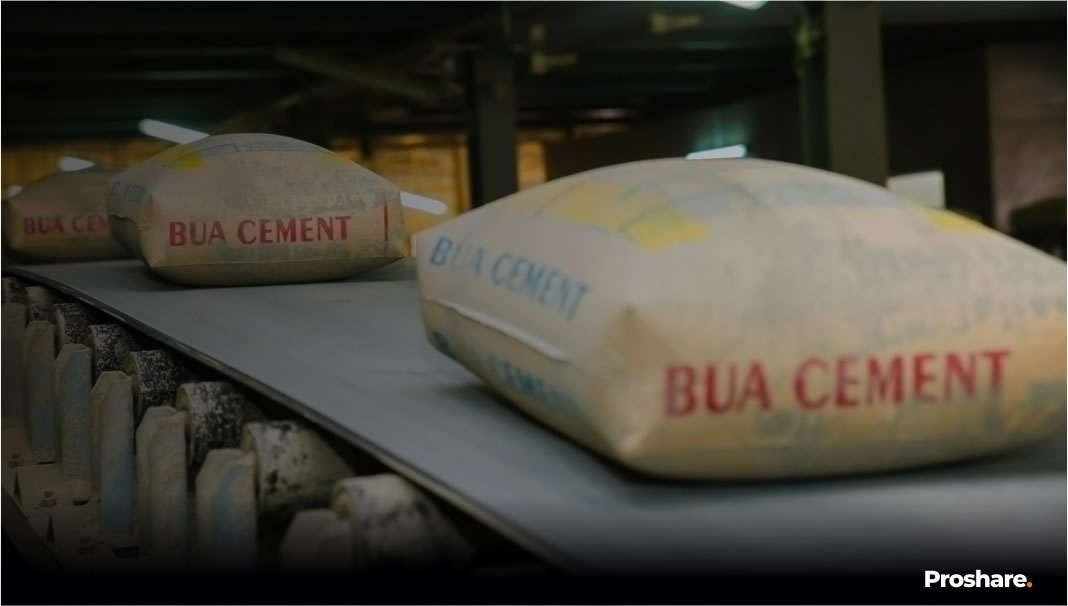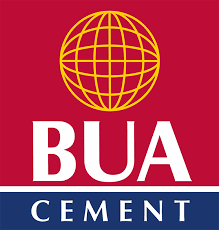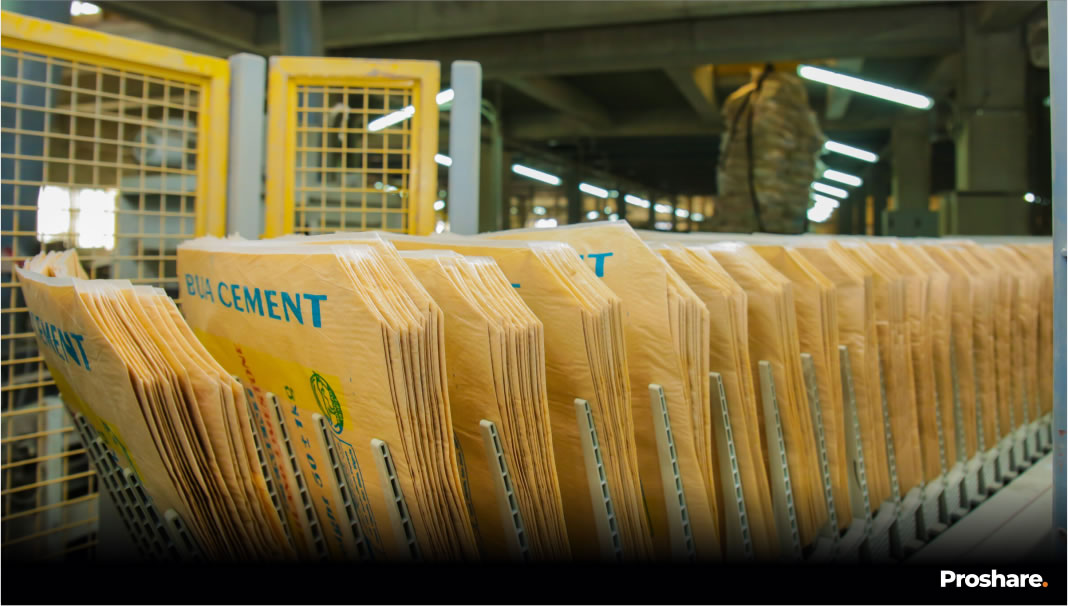BUA Cement's H1 2022 results defied macroeconomic constraints caused by rising energy costs and currency devaluation. The cement maker reported notable growth in its profit and a -11.57% decline in gearing. BUA's Capital structure showed reduced operational stress with a +31.52% rise in Equity.
The company's cost of sales and energy expenses per ton rose by +20.67% and +34.8%, respectively, due to rising inflation and Naira depreciation. Revenue increased steeply due to pricing activities and increased production volume, aided by the additional capacity in the new Sokoto line 4.
Key Highlights
- Revenue appreciated by +51.73% from N124.28bn in H1 2021 to N188.56bn in H1 2022
- Cost of sale increased by +47.38% from N66.16bn in H1 2021 to N97.50bn in H1 2022
- Operating profit grew by +53.86% to N77.74bn in H1 2022 compared to N50.52bn in Q1 2021
- Finance income appreciated by +256.02% from N402.01mn in H1 2021 to N1.43bn in H1 2022
- Finance costs increased by +246.12% to N3.22bn in H1 2022
- Profit before tax increased by +50.69% Y-o-Y to N74.89bn in H1 2021
- Basic earnings per share rose by +41.4% from N0.128k to N0.181k in H1 2021
- The asset turnover ratio rose to 0.22X in H1 2022 from 0.19X in H1 2021
- Total debt increased by +16.31% Y-o-Y to N82.25bn in H1 2022
- Total Equity increased by +31.52% from N349.35bn in H1 2021 to N459.48bn in H1 2022
Share Price Movement
Over the first four months of 2022, the share price displayed a lateral movement with smoothened volatility. On August 03, 2022, the moving average share price showed resistance at N74.25k and support at N61.0k between May 4, 2022, and June 21, 2022. On August 5, 2022, the year-to-date return on share price fell by -18.28%, from N71.95 to N58.80. (see chart 1 below).
Chart 1: Share Price Movement
Source: BUA Cement, Proshare Research.
Revenue
BUA Cement's revenue increased by +51.73% year-on-year (Y-o-Y), from N124.28bn in H1 2021 to N188.56 bn in H1 2022. . Total sales from the combined manufacturing units (Sokoto and Edo) for H1 2022 were 3.3 million tonnes, with 41 thousand exported. Revenue growth was driven by a rise in production volume and an increase in cement pricing.
Despite limiting energy disruption by employing diverse energy sources, energy cost rose +64.66% from N25.45bn to N43.58bn. (see chart 2 below).
Chart 2: Revenue H1 2018 -H1 2022 (N'bn)
Source: BUA Cement, Proshare Research.
Profit Before Tax
Profit before tax climbed by +50.69% in H1 2022, rising from N49.70bn in H1 2021 to N74.89bn in HH H1 2022. The increase was attributed to a +53.86% rise in operating income, from N50.52bn in 2021 to N77.736bn in 2022. Despite the significant rise, the firm lost N758.67mn due to the difference between the auction bid rate and the I&E rates and a +246.12% increase in interest expenses (see chart 3 below).
Chart 3: Profit Before Tax H1 2019 -H1 2022 (N'bn)
Source: BUA Cement, Proshare Research.
Current Ratio
The current ratio grew considerably from 0.98 in H1 2021 to 1.11 in H1 2022. The marked improvement in the working capital ratio was supported by a +123.71% growth in cash and cash equivalents, which grew from N57.33bn in 2022 to N128.24bn. Short-term assets rose by +82.63%, while short-term liabilities increased by +61.83%. Regardless of the increase in cash and cash equivalents, analysts observed a N17.05bn decline in cash in the bank, falling from N57.29bn to N40.24bn in H1 2022 (see chart 4 below).
Chart 4: Current Ratio H1 2020 – H1 2022
Source: BUA Cement, Proshare Research.
Acid Test
The acid test ratio increased in H1 2022, from 0.71 in H1 2021 to 0.87 in H1 2022. Both short-term assets (excluding inventories) and short-term liabilities grew by +97.89% and +61.83%, respectively. (see chart 5 below).
Chart 5: Acid Test Ratio H1 2020 - H1 2022
Source: BUA Cement, Proshare Research.
Assets Turnover ratio
The clinker manufacturer achieved a new high in asset turnover ratio. The asset base ratio grew by +17.33% Y-o-Y, from 0.91 in H1 2021 to 0.22 in H1 2022. According to analysts, the considerable increase in topline earnings and total assets aided the company's efficiency since the ratio of 0.22 in asset turnover amounted to N0.22k for every naira of assets employed (see chart 6 below).
Chart 6: Asset Turnover Ratio H1 2020 - H1 2022
Source: BUA Cement, Proshare Research.
Debt-to-Equity Ratio
Debt-to-Equity ratio contracted slightly from 0.20 in H1 2021 to 0.18 in H1 2022. The ratio fell by -11.57% Y-o-Y, owing to a +82.49% increase in retained earnings, which rose from N133.31bn to N243.28bn. Nonetheless, total borrowings increased by +16.31% year on year, from N70.71 bn to N82.25bn (see chart 7 below).
Chart 7: Debt-to-Equity Ratio H1 2020 - H1 2022
Source: BUA Cement, Proshare Research.
A Sector's Cash Conversion Cycle- Different Strokes for Different Folks
Growing operating cash flow is at the heart of a sound business, and corporates find this a tough act to follow. Cement companies are discovering that conversion of purchases on inputs (outflow) to income from sales (inflow) is increasingly difficult. A slowdown in Nigeria's gross domestic product (GDP) growth (Fitch Global estimates 2022 growth at 2.5% against other forecasts of around 3.4%) could hurt cement industry cash flow.
A rise in the inflation rate (19.64% as of July 2022) may lead to incremental increases in the Central Bank's policy rate (MPR) (now at 14%) and higher domestic lending rates. Higher borrowing costs would cut corporate profit after tax (PAT) and reduce local cement makers' operating and free cash flows in 2022.
In H1 2022, cement maker's cash conversion cycles (CCCs) were an average of 490 days for Lafarge, 406 days for Dangote cement, and 274 days for BUA. The longer the days of outstanding payables, the more cash was available for the businesses to invest in short-term projects to enhance working capital and cash flow and vice-versa.
Regarding receivables, Dangote led the band with 19 days on hand, followed by Lafarge at 21 days on hand and BUA at 77 days on hand. The quick translation was that the shorter the receivable days on hand, the more cash was available for operations. Dangote had a lower tolerance for delayed payments and, therefore, had superior liquidity than competitors.
The sector's inventory management dashboard revealed inventory patterns across competing manufacturers. High inventory days indicated the pressure on operating and free cash flows. BUA led the pack with the highest inventory days of 171 days, while Lafarge and Dangote held inventory days of 208 days and 277 days, respectively. In other words, Dangote had the largest stockpile of inventories which counterbalanced its relatively low receivables and thinned down its free cash flow.
The problem of cash and liquidity can be tricky. H1 2022 data shows that BUA Cement had the least liquidity at a negative 25 days working capital days on hand, followed by Dangote at 160 days and Lafarge at 261 days. The longer receivables payment and the shorter payables period reinforced BUA's weaker working capital cash flow (see illustrations 1 & 2 below).
Illustration 1 Cement Company Cash Conversion Cycles
Illustration 2 Deconstructing Cement Company Cash Cycles
Sweating SWOTs
The industry's strengths, weaknesses, opportunities and threats are caught in the illustration below (see illustration 3 below).
Illustration 3 SWOT Analysis of Nigeria's Cement Industry

A Nigerian Cement Industry PESTEL Drive by
Political
Politics has served awkward punches on the jaw of private enterprises in Nigeria, but the cement industry has swerved to dodge the thick fists. Cement makers have enjoyed government tax concessions and other fiscal support. However, with the Federal Government of Nigeria (FGN) in dire fiscal straits, the concessionary environment may be short-lived, except for the biggest clinker makers. Dangote, Lafarge and BUA may still benefit from road infrastructure-related tax credits, but other preferential treatment may fizzle.
With the 2023 elections creeping nearer, the new federal government may be less prepared to allow potential tax revenues to escape capture. The need to close the government budget gap may see cement company margin of 60%, BUA'S margin of around 30% and Lafarge's margin of slightly under 25%.
Beyond taxes, a new government may want to stimulate real estate and infrastructure development by encouraging lower product prices. Nigeria's cement industry operates as a collusive oligopoly, meaning that product pricing is like that of a monopolist. A hawkish federal competition and consumer protection council (FCCPC) may be less accommodating of sectoral pricing
Economic
The industry's oligopolistic market structure raises near monopolistic pricing and supernormal profit considerations. Admittedly, the three largest companies have seen costs rise, and foreign exchange access fizz, but demand has remained durable, allowing for operating margin protection. Breakeven margins differ across the sector's front runners, but margins have become relatively modest, with Dangote posting the best.
Social
Cement has been the most common and extensively used adhesive in the construction industry. It is employed on highways, houses, bridges, commercial establishments, dams, and flyovers. Nigerian cement has grown from import dependency to a thriving African export epicentre. credit goes to these cement industries as they also provide access to funds for start-ups, SMEs, and large enterprises. Several job opportunities have been created over the years to help reduce unemployment.
Technology
Changing the energy chemistry of cement companies to lessen their reliance on gas and hydro plants could improve product quality by using coal combustion residuals, such as fly ash and slag. These inputs can be used as aggregate in hot mix base courses to improve durability, efficiency, and net CO2 emissions. Cement makers could adopt renewable energy sources such as wind, solar, and waste heat recovery systems in cement manufacturing. Wind power facilities are less expensive to operate and maintain compared to other energy sources such as coal. They are fuel-free and ecologically beneficial.
Environmental Factors
The cement industry has contributed immensely to rapid infrastructural development with the construction of houses, roads, and companies, all summing up to productivity that aids economic growth. However, the benefits and contributions are impaired by the industry's heavy reliance on fossil fuels and non-renewable resources for production. The toxic substances contribute extensively to global warming and climate change.
Scientists estimated that 6% of carbon dioxide greenhouse gas emissions are generated from cement production, which is hazardous to plants and human health. The environmental law and regulations on emissions outrightly affect the industry, although the recent energy shocks have forced a diversion to some renewables like coal to replace fossil fuel combustion.
Categorically, the recent collapse of the country signals quality deficiency in building materials, primitively targeted to cement composition as against the durability of cement in other countries.
Legal Factors
The dominant entities of the industry demonstrate strong market power that nudge prices above competitive market levels; their market power creates a higher profit margin relative to smaller competitors. In 2017, Dangote cement saw a rise in cement prices due to weak pricing oversight. However, the new Federal Competition and Consumer Protection Act of 2018 has attempted to check market pricing outside competitive arrangements.
The infrastructural contribution of the cement industry has supported growth resilience, having received multiple government tax rebates in the construction of roads under Section 23 of the company income tax act (CITA).
Illustration 4 Nigeria's Cement Industry PESTEL Analysis
Last Words
Analysts believe that Nigeria's GDP growth rate will fall between 2.5% and 3.1% in 2022, leading to a potential reduction in demand for cement as the CBN tries to head off higher inflation rates by raising the monetary policy rate (MPR) to between 15% and 16% in Q3 2022.
While BUA cement has managed to grow sales steadily (mainly by raising prices), the headroom for further revenue increases appears slimmer. With the inability to raise prices much higher on slower sales growth, the company's earnings before tax (PBT) growth would remain modest or decline. What is true of BUA cement would affect competitors who would all see slower revenue growth and weaker profit growth.
 Lagos, NG • GMT +1
Lagos, NG • GMT +1











 799 views
799 views





























 Sponsored Ad
Sponsored Ad
 Advertise with Us
Advertise with Us







